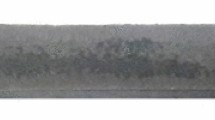Abstract
A methodology to determine the residual lifetime of continuous caster machine roll is developed. The roll is modeled as a thick-walled cylinder with a semielliptical crack. The study takes into account the statistical variation of the characteristics of cyclic crack resistance under operating conditions. The procedure enables to determine the parameters of acceptable distribution of crack depth for a given number of stress cycles and the distribution of durability for a given allowable depth of crack.
Similar content being viewed by others
References
Mercado-Solis R. D., Beynon J. H. (2005) Simulation of thermal fatigue in hot strip mill work rolls. Scandinavian Journal of Metallurgy 34: 175–191
Yasniy P., Maruschak P., Lapusta Y., Hlado V., Baran D. (2008) Thermal fatigue material degradation of caster rolls’ surface layers. Mechanics of Advanced Materials and Structures 15: 499–507
Colas R., Ramyrez J., Sandoval I., Morales J. C., Leduc L. A. (1999) Damage in hot rolling work rolls. Wear 230: 56–60
Yasniy P., Maruschak P., Lapusta Y. (2006) Experimental study of crack growth in a bimetal under fatigue and fatigue–creep conditions. International Journal of Fracture 139: 545–552
Gorbatikh L., Kachanov M. (2000) A simple technique for constructing the full stress and displacement fields in elastic plates with multiple cracks. Engineering Fracture Mechanics 66: 51–63
Lapusta, Y. Henaff-Gardin, C. (2000). An analytical model for periodic α°-layer cracking in composite laminates. International Journal of Fracture, 102, L73–76 (2000).
Loboda V., Lapusta Y., Sheveleva A. (2007) Electro-mechanical pre-fracture zones for an electrically permeable interface crack in a piezoelectric biomaterial. International Journal of Solids and Structures 44: 5538–5553
Piat R., Lapusta Y., Böhlke T., Guellali M., Reznik B., Gerthsen D., Tengfei Chen, Oberacker R., Hoffmann M.J. (2007) Microstructure-induced thermal stresses in pyrolytic carbon matrices at temperatures up to 2900°C. Journal of the European Ceramic Society 27: 4813–4820
Lapusta Y, Wagner W. (2001) On various material and fibre-matrix interface models in the near-surface instability problems for fibrous composites. Composites Part A: Applied Science and Manufacturing 32: 413–423
Revel P., Kircher D., Bogard V. (2000) Experimental and numerical simulation of a stainless steel coating subjected to thermal fatigue. Materials Science and Engineering A 290: 25–32
Srivastava A., Joshi V., Shivpuri R. (2004) Computer modeling and prediction of thermal fatigue cracking in die-casting tooling. Wear 256: 38–43
Grooteman F. (2008) A stochastic approach to determine lifetimes and inspection schemes for aircraft components. International Journal of Fatigue 30: 138–149
Castillo E., Fernàndez-Canteli A., Pinto H., Ruiz-Ripoll M. L. (2008) A statistical model for crack growth based on tension and compression Wöhler fields. Engineering Fracture Mechanics 75: 4439–4449
Riahi H., Bressolette Ph., Chateauneuf A. (2010) Random fatigue crack growth in mixed mode by stochastic collocation method. Engineering Fracture Mechanics 77: 3292–3309
Beretta S., Carboni M. (2006) Experiments and stochastic model for propagation lifetime of railway axles. Engineering Fracture Mechanics 73: 2627–2641
Ichikawa M., Hamaguchi M., Nakamura T. (1983) Statistical characteristics of m and fatigue crack propagation law da/dN=C(ΔK)m (2024-T3 Al alloy). Journal of the Society of Materials Science 33: 8–13
Carpinteri A. (1992) Elliptical-arc surface cracks in round bars. Fatigue and Fracture of Engineering Materials and Structures 15: 1141–1153
ASTM Standard test method for measurement of fatigue crack growth rates (1992). Annual Book of ASTM Standards, E647-00, Vol 03.01, W. Conshohocken, PA, 674–701.
Varfolomeev I. V., Yasniy O. P. (2008) Modeling of fracture of cracked structural elements with the use of probabilistic methods. Materials Science 44: 87–96
Author information
Authors and Affiliations
Corresponding author
Rights and permissions
About this article
Cite this article
Yasniy, O., Maruschak, P. & Lapusta, Y. Probabilistic modeling of surface crack growth in a roll of continuous casting machine. Int J Fract 172, 113–120 (2011). https://doi.org/10.1007/s10704-011-9641-7
Published:
Issue Date:
DOI: https://doi.org/10.1007/s10704-011-9641-7




